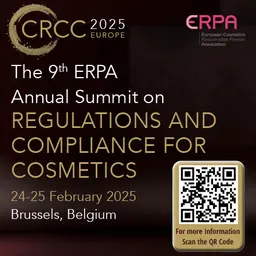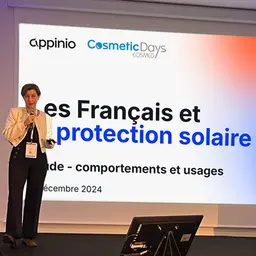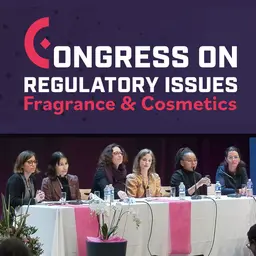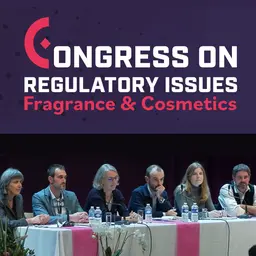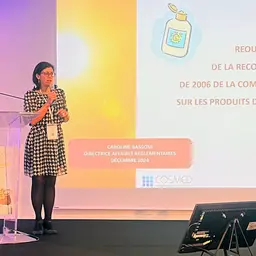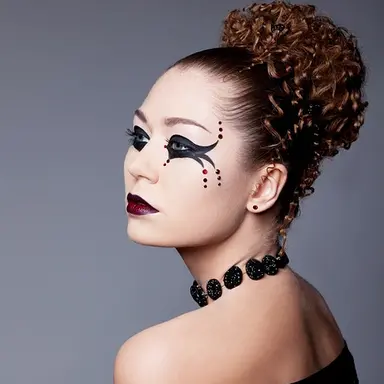
“When art inspires cosmetic innovation” was the theme chosen for the 10th edition of the U’Cosmetics student competition. If the subject seems extremely vast, the relationship between art and cosmetics is far from new. Since time immemorial, the canons of beauty and aesthetics have been largely inspired by the artistic trends and fashions of the time. On the occasion of the conference organized on the sidelines of the competition, Laëtitia Tetedoux, director of TTdo Marketing, and Ariane Goldet, Editor of Beauty, Fitness and Health, proposed a short trip back in time to see how art has inspired and still inspires cosmetics.
“Over the centuries, the ideal of beauty has changed. It fluctuates between a desire for artificiality and a pronounced taste for the natural. But what does not change is that, at all times, men and women feel the need to adhere to a certain aestheticism. The supports of inspiration change over time, but the desire for beauty remains the same,” says Ariane Goldet.
The Middle Ages
In those days, beauty was a gift from God. A grace that should not be touched. Therefore, there is no question of modifying the work of the Divine.
“In the portraits we see of women at that time, we see that we only see their faces. The loose dresses cover the shoulders, the jewellery hides their skin, which had to be extremely white”, says Ariane Goldet.
However, women began to free themselves from this rigour at the end of the Middle Ages by waxing their foreheads and colouring their lips with ointments (made from cochineal carmine).
“It is at this moment that the profession of apothecary appears,” says Laëtitia Tetedoux. “We can see today that the codes of this profession are taken over by some brands such as Garancia or Mademoiselle Agathe. We also notice this fashion through brown, glass packaging and a return to the herbalist’s shop of yesteryear.”
La Renaissance
Beauty becomes calculated and mathematical thanks to the notion of golden number and divine proportion.
The sculptors are passionate about the physiognomy, the right measurements for the most harmonious features possible.
“Women want to give the illusion of perfection. They become beautiful to please”, reports Ariane Goldet.
This quest for symmetry has not fallen into disuse today, far from it.
From now on, we talk about contouring with muses such as Kim Kardashian who have democratized this make-up technique. It is a matter of working on the shadows of the face in order to create an illusion of symmetry and homogeneity of the features.
The royalty
Louis XIV is known for his taste in cosmetics. He has democratized the powdery complexion, to hide his age and even his expressions, as well as the red lips.
“If we had to wrap our faces so much, it was to look perfect and erase skin irregularities. This trend is explained today by work carried out by the CNRS and the theory of the golden triangle”, explains Laëtitia Tetedoux. “If the face looks uniform, there will be an instantaneous perception of beauty by the brain. The idea of concealing one’s imperfections is linked to this return of aestheticism. Nowadays, we have witnessed the explosion of rice powders, correctors and other blurs, to blur the complexion and erase skin irregularities. A little coquetry of the century too, with flies that made sense depending on where they were placed. This fashion has been updated by some make-up artists and we even see kits to create fake moles or fake freckles!”
The end of royalty marks a “cosmetic” turning point.
The revolutionaries tore off the powdered wigs and banished make-up, the symbol of the old regime.
The 19th century or “the art of seduction”
“We notice two very different modes at that time. On one side, the soft and virtuous bourgeois woman, with an exaggerated maternal silhouette and round arms. On the other hand, there is the”beautiful patient” who displays a mine of depression at the threshold of the precipice, the height of distinction. The more pallid you were, the better. To do this, women drank vinegar, deprived themselves of sleep for days and ingested belladonna-based drugs. In addition to cultivating this dead complexion, some women also darkened their hair,“ says Ariane Goldet. “What is nothing more or less than the neo-Gothic movement we know today”, says Laëtitia Tetedoux, “Beauty is becoming austere, features must disappear in favour of a more baroque aesthetic;”
The Industrial Revolution
Between the appearance of the light bulb, the first photo studios, the birth of Vogue in the USA, the writing of “L’Éloge du Maquillage” by Baudelaire and the beginnings of plastic surgery, the era is favourable to all kinds of coquetries.
“In the major innovations of the 19th century, it is imperative to mention the first synthetic colour by William Perkin in 1856. Whereas before vegetable or animal dyes were used, Perkin found by chance the way to make mallow synthetically. This discovery will revolutionize the textile and cosmetics industry,” says Ariane Goldet.
The 20th century
After the war of 14-18, it was the Roaring Twenties, marked by a return to romanticism. “Floral motifs are used throughout art, but also on cosmetics packaging such as Patyka and Ditptyque. We also notice that this trend is returning to fashion as we see flowers everywhere on Instagram and Pinterest”, reports Laëtitia Tetedoux,
But it is also the full period of Art Deco. The line gets a little harder. “We fill areas with colours, it’s a bit like the beginnings of cubism,” she says. “Many brands have been inspired and are inspired by this aesthetic, such as the Studio Line packaging from L’Oréal.”
The conquest of the 7th art
The invention of cinema has seen the arrival of great stars such as Marlene Dietrich. Eyebrows drawn, intense eyes, strong make-up: all it takes is for all women to identify themselves and want to look like these muses.
Cosmetics was therefore, at that time, a means of achieving this.
Colors !
The 1950s marked the advent of skincare. Beauty becomes a little more natural again, but everything is very calculated. “Elegance above all! It is Grace Kelly beauty that inspires women,” says Ariane Goldet.
Turning in the 70s, we assume much more color with the pop art movement.
The hippie trend, at the same time, brought floral motifs back into fashion. “A large number of brands have adopted these festive, joyful and colourful codes, such as Lush or Khiel’s. The beauty industry wants to show that cosmetics is a moment of pleasure and celebration,” says Laëtitia Tetedoux.
Colour is no longer enough in the 80s, it’s time to switch to fluorescent light!
Personalities such as Madonna, Boy Georges or Jean-Paul Goude highlight a very flashy aesthetic that inspires make-up.
Contemporary cosmetics continues to draw its inspiration from all forms of art, whether pictorial, cinematographic or other.
Beauty is evolving thanks to technological advances, but the fashions and care issues remain the same.
Coco Chanel said “fashion is what goes out of fashion”, it is also valid in cosmetics!




